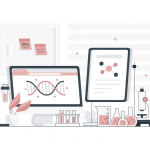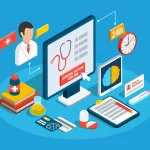
How Patient Feedback Enhances Risk Management In Hospitals?
Effective risk management is crucial for ensuring patient safety and improving healthcare outcomes. In hospitals, integrating patient feedback into strategies enhances risk management in hospitals by significantly improving the ability to identify, assess, and mitigate risks.
This article explores how patient feedback contributes to risk reduction in hospitals and highlights best practices for leveraging feedback systems to enhance patient safety.
Importance Of Risk Management In Healthcare
Risk management in healthcare involves identifying, analyzing, and mitigating potential risks that could affect patient safety and the overall quality of care. Enhances Risk Management in Hospitals by aiming to minimize adverse events and enhance the effectiveness of healthcare delivery.
By proactively addressing risks, hospitals can prevent incidents, reduce errors, and improve patient outcomes.
The Role Of Patient Feedback
Patient feedback is a valuable source of information that helps healthcare providers understand the patient experience and identify areas for improvement.
By systematically collecting and analyzing patient feedback, hospitals can gain insights into potential risks and address them before they escalate.
Enhancing Risk Management With Patient Feedback
Enhancing risk management with patient feedback enhances risk management in hospitals by using insights from patients to identify and address potential risks in healthcare.
By integrating patient experiences into risk management strategies, hospitals can improve safety and care quality, ensuring that patient-centered approaches and effective risk management patient interaction minimize adverse events and optimize overall healthcare outcomes.
1. Identifying Risks Through Patient Experience
Patient experience encompasses all aspects of a patient’s interaction with the healthcare system, from appointment scheduling to post-care follow-ups. Patient feedback provides real-time insights into these experiences, helping hospitals identify potential risks and areas for improvement.
Common issues reported through patient feedback include long wait times, communication barriers, and inconsistencies in care.
2. Improving Patient Safety With Feedback
By analyzing feedback data, hospitals can uncover patterns and trends that reveal underlying issues impacting patient safety. For example, repeated comments about medication errors or inadequate infection control measures can prompt immediate reviews and corrective actions.
Addressing these concerns not only improves patient safety but also enhances overall care quality.
3. Implementing Feedback Systems For Effective Risk Management
To effectively use patient feedback for risk management, hospitals should implement robust feedback systems. These systems should be designed to collect, analyze, and act on feedback efficiently. Key components include:
- Surveys and Questionnaires: Regularly administered to patients to gather their opinions on various aspects of care.
- Patient Portals: Online platforms where patients can provide feedback and view their medical information.
- Focus Groups: Organized sessions where patients discuss their experiences in detail.
- Real-time Feedback Tools: Digital systems that allow patients to provide immediate feedback during or after their visit.
Best Practices For Utilizing Patient Feedback
- Act on Feedback: Ensure that patient feedback is not only collected but also acted upon. Develop a systematic approach to address issues and implement changes based on feedback.
- Communicate Changes: Keep patients informed about the improvements made in response to their feedback. Transparency builds trust and encourages continued participation in feedback systems.
- Train Staff: Educate healthcare providers and staff on the importance of patient feedback and how to use it to enhance their practices. Training should focus on both collecting and responding to feedback.
- Monitor and Evaluate: Continuously monitor the effectiveness of feedback systems and evaluate their impact on risk management and patient safety. Adjust strategies as needed to ensure ongoing improvement.
- Promote a Feedback Culture: Foster an environment where patient feedback is valued and encouraged. A culture of openness helps in identifying risks early and improving patient care.
Impact Of Feedback On Risk Reduction
The impact of feedback on risk reduction enhances risk management in hospitals by minimizing potential risks. By analyzing and acting on patient feedback, hospitals can identify areas of concern, implement corrective actions, and reduce the likelihood of adverse events, ultimately leading to safer and higher-quality care
Case Studies and Examples
Several hospitals have successfully integrated patient feedback into their risk management strategies, demonstrating how this approach enhances risk management in hospitals and leads to notable improvements in patient safety and care quality. For instance, one hospital implemented a real-time feedback system that allowed patients to report issues immediately.
This proactive approach enabled the hospital to address concerns quickly, thereby reducing the incidence of adverse events.
Another example is a hospital that used patient feedback to improve communication between patients and healthcare providers. By addressing common concerns related to communication, the hospital reduced misunderstandings, improved patient satisfaction, and further enhances risk management in hospitals.
Conclusion
Integrating patient feedback into risk management strategies is essential for enhancing patient safety and the overall quality of care in hospitals. By actively collecting and analyzing feedback, healthcare providers can identify potential risks and implement proactive measures to address them.
This not only reduces the likelihood of adverse events but also fosters a culture of continuous improvement and trust within the healthcare system. As hospitals prioritize patient-centered care, leveraging feedback becomes a powerful tool for ensuring safer, more effective healthcare delivery.
Frequently Asked Questions (FAQs)
What Is Risk Management In Healthcare?
Risk management in healthcare involves identifying, analyzing, and mitigating risks that could impact patient safety and the quality of care. It aims to prevent adverse events and improve overall healthcare delivery.
How Does Patient Feedback Contribute To Risk Management?
Patient feedback provides insights into the patient experience and helps identify potential risks and areas for improvement. By analyzing feedback, hospitals can address issues before they escalate, which enhances risk management in hospitals and improves patient safety.
What Are Some Common Sources Of Patient Feedback?
Common sources of patient feedback include surveys, questionnaires, patient portals, focus groups, and real-time feedback tools. These methods help hospitals gather information about patient experiences and identify areas for improvement.
How Can Hospitals Implement Effective Feedback Systems?
Hospitals can implement effective feedback systems by using surveys, patient portals, focus groups, and real-time feedback tools. It’s essential to ensure that feedback is collected, analyzed, and acted upon promptly.
Enhance Patient Care and NABH Compliance with LazyMonkey
LazyMonkey is your all-in-one solution for improving patient care, retaining more patients, and meeting NABH standards. Our powerful QR-based feedback tool enables you to capture real-time insights from patient feedback, discharge surveys, staff and doctor evaluations, and clinical research, while also streamlining inter-departmental communication.
Transform your healthcare facility today - reach out to us at hello@lazymonkey.in, or request a demo here!
Elevate Your Restaurant Experience with LazyMonkey
LazyMonkey’s QR-based feedback system helps you gather real-time insights from customers, track satisfaction levels, and enhance the dining experience. Get instant feedback on your menu, service, and ambience, and make data-driven improvements to boost repeat customers and reviews.
Improve your restaurant today – reach out to us at hello@lazymonkey.in, or request a demo here!
Empower Student Engagement and Campus Improvement with LazyMonkey
LazyMonkey offers a seamless way to gather student feedback, track satisfaction, and enhance campus life. From course evaluations to dorm feedback, our QR-based solution makes it easy to capture valuable insights and improve student retention.
Upgrade your university experience – contact us at hello@lazymonkey.in, or request a demo here!
Streamline Feedback and Drive Performance Across Your Enterprise/Franchise with LazyMonkey
Whether you manage one or multiple locations, LazyMonkey’s QR-based feedback system helps you gather real-time employee and customer feedback. Improve operational efficiency, track satisfaction, and make data-driven decisions to enhance brand consistency and growth.
Transform your franchise today – reach out to us at hello@lazymonkey.in, or request a demo here!
Enhance Customer Satisfaction and Service Standards in Banking with LazyMonkey
LazyMonkey empowers banks to capture real-time feedback from clients across branches. Improve customer experience, assess service quality, and ensure regulatory compliance with our QR-based solution, helping you retain clients and meet banking standards.
Elevate your bank’s customer care – contact us at hello@lazymonkey.in, or request a demo here!
Boost Customer Engagement and Mall Satisfaction with LazyMonkey
LazyMonkey’s QR-based feedback tool enables you to collect feedback from shoppers, track satisfaction, and enhance the mall experience. Gather insights on store services, cleanliness, and entertainment to create an unmatched customer journey.














